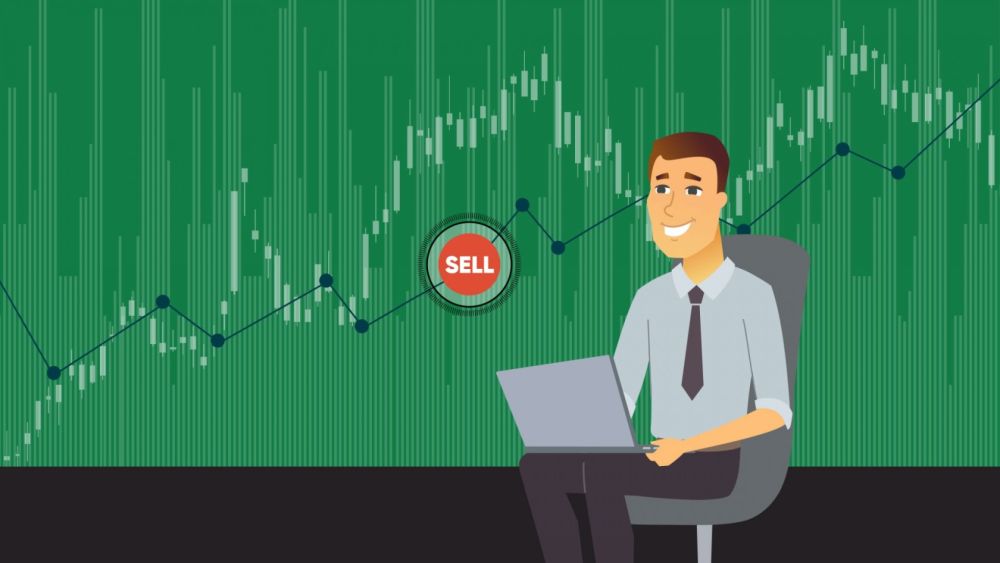Traders are always trying to get a competitive advantage. This means that they are constantly consuming information to find and make use of the best available strategies and trends. One such trend is that of algorithmic trading, which is also known as automated trading or algo-trading.
An algorithm is series of unambiguous and well-defined instructions that performs some task and comes to a stop. This is the basis for algo-trading as it leverages the processing power of computers to make trades based on an algorithm. The intention of this is to complete trades at speeds that humans cannot. By doing this, algo-traders hope to generate profits at a quicker rate than normal.
The parameters that are setup in these algorithms revolve around quantity, time, price, or some other mathematical construct. To fully take advantage of machine capabilities, High Frequency Trading (HFT) is one of the most common applications of algo-trading today. Using a provided algorithm, the computer system rapidly performs trades that meet established requirements across several markets.
Strategies Used in Algo-Trading
If algorithms are being developed, there must be something that governs them. In many cases this is an existing strategy. The intention of using these strategies is to achieve a certain result such as increased earnings. Some of these strategies are:
- Mathematical strategies – These are for those persons who are familiar with mathematical models such as the delta-neutral strategy, which is proven in the discipline of trading.
- Implementation shortfall – Used to reduce order cost by doing real-time market trading. By delaying the execution of a trade, if a stock moves favorably, a trader can benefit from the principle of opportunity cost.
- Volume Weighted Average Price (VWAP) – Using historical volume profiling, this strategy segments a big order into smaller chunks. The chunks are not a standard size as the algorithm dynamically decides on the size for each trade. The idea is to get as close as possible to the VWAP.
- Time Weighted Average Price (TWAP) – Similar to VWAP, this strategy segments a large order into smaller orders. These orders do not have a fixed size and are instead determined on a dynamic basis. Instead of having the focus on volume, however, orders are released at timed intervals between a start and an end time boundary.
- Arbitrage – Sometimes a single stock has multiple listings in different markets with different values. When this strategy is employed, the algorithm targets such situations and buys the stock at the lower price then sells it in the other market at the higher price.
Requirements for Algo-Trading
Of course, the implementation of a strategy that is executed by a computer system has some prerequisites. These are as follows:
- Internet access – This one is a no-brainer as trading cannot take place without connectivity to the exchange. As there is no direct Local Area Network (LAN) connection between your machine and the trading platform, an internet connection must be present.
- Computer program – Since a computer system is being used, it must be given the required instructions to do what is necessary. This can come in the form of a pre-built program, or in the form of a custom written piece of software created by you or a programmer/programming team you hire.
- Testing environment – A rule in the world of computer software is the requirement of testing before going live. In this context, you must ensure you have access to a test environment that makes use of historical data for your testing.
- Access to the required feeds – There’s no point in designing this complex system if it cannot do anything with the data it is supposed to be monitoring. You must ensure that your algorithm has access to the required data streams and platforms to do monitoring and order placement
Benefits of Algo-Trading
The benefits of leveraging the power of a computer system for trading on your behalf cannot be overstated. This is especially true considering you set the trading parameters yourself. The advantages of algo-trading are as follows:
- Removal of the human error factor – While there are certain aspects of business that are more suited to human interaction, trading is not one of them. While it can be done by humans, computers can effortlessly repeat the same instruction in the same way hundreds of times with no deviation. Humans cannot offer this kind of precision upon repetition.
- Multi-focus – This is one of the biggest advantages of algo-trading. Computer systems can simultaneously check on and respond to multiple conditions in multiple markets without fail.
- Timeliness – Computer systems can operate in nanoseconds and microseconds as opposed to humans that cannot efficiently process any unit of time smaller than a second. This allows for precision timing in trades, which mitigates the possibility of price changes due to time lapses
- Testing potential – Once a test environment exists, an algorithm can be tested on historical data to give an idea of the feasibility of the strategy.
Conclusion
Algo-trading has many advantages over human beings in the areas of speed and precision. However, it is recommended that you review and ensure that you meet the prerequisites so you can enjoy a successful implementation.
-

The rhytm beneath the noise
-

You Don’t Need a Trading Style. You Need an Edge.
-

Consistency Isn’t the Goal—It’s the Outcome
-

What 2 Quadrillion Data Points Told Us
-

Math and Physics-Based Trading in Any Market Condition
-

Do not worry about anomalies
-

Consistency should not be the goal. Consistency should be the result.
-

Stop canceling fridays
-

The Elliott Wave Forecast is Subjective, Bias Driven And Backwards looking
-

Finding patterns in market data

